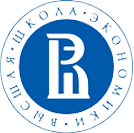The GDI assesses the exposure of defence and security institutions to corruption risks. The analysis covers 86 countries and the following areas:
- financial,
- operational,
- personnel,
- political, and
- procurement.
In order to define the exposure of the defence sector to corruption, each country is assessed across 77 questions, with over 200 underlying indicators. The list of indicators is based on the TI-DS typology of corruption risks in the area. In particular, the assessment of the financial risk includes, among other things, public availability of the reports of independent auditing of asset disposals, publication of actual defence expenses throughout the budget year etc.; the analysis of the operational risk covers private military contracts, the presence of military doctrine addressing corruption as a strategic issue etc.; the review of the personnel risk covers the publication of outcomes of court proceedings against intelligence personnel accused of corruption, the presence of a code of conduct for military personnel etc.; the political risk encompasses public debate of defence strategy, ratification of the UN Convention against Corruption etc.; the analysis of the procurement risk includes the presence of a legal framework regulating procurement in the defence and security sector, disclosure of information on procurement etc.
For each country, the assessment under the abovementioned indicators was conducted by a small team of local researchers. The process started with the assessor gathering the necessary information through interviews with key individuals in government, military, academia and civil society, and carrying out desk research. At a later stage, a certain level of scoring was assigned to each indicator under a special scoring matrix. Then, indicator scores were aggregated using a simple aggregation method (no weighting): first, for each of the five areas for each country, then for each country in total. Additionally, each range of scores was assigned to one of six corruption risk categories:
- A (a very low corruption risk) – 83-100 scores;
- B (low) – 67-82 scores;
- C (moderate) – 50-66 scores;
- D (high) – 33-49 cores;
- E (very high) – 17-32 scores;
- F (critical) – 0-16 scores.
The findings of the preliminary assessment were subsequently sent to two independent local peer reviewers for review possibly with the engagement of the TI chapter in the respective country; at that stage, governments could be involved to verify the accuracy of data and, if necessary, provide additional commentary.
The analysis showed that most reviewed countries (62%) are subject to a high, very high or critical corruption risk; an overall score for all countries is of only 49. The authors of the GDI also stress that almost every country performs badly in the military operations risk area with an average score of just 16 out of 100. Moreover, having compared the findings of the Index to the data on arms transfers provided by Stockholm International Peace Research Institute, the TI-DS experts found out that 49% of global arms imports are sold to counties facing a high to critical risk of defence corruption.
New Zealand tops the Index with a score of 85. It is the only country in the A category. The B category includes the countries placed from the 2nd to the 9th in the ranking: Belgium, Germany, Latvia, the Netherlands, Norway, Switzerland, Taiwan and the United Kingdom. 17 countries with the lowest score are placed in the F category which includes Sudan (having only five scores), Venezuela, Qatar, Saudi Arabia, Azerbaijan, Angola and others.
Russia has a final score of 36 and is placed in the D category. The country has the poorest result in the operational area with a score of only 15, which placed it in the F category; Russia has its best result in the personnel area if compared to the other areas (54 scores).
The GDI findings are available in a dedicated section on the IT-DS website which contains, in particular:
- consolidated information about the scores of each country (both overall and in each of the five areas);
- country profiles containing comprehensive data about the outcome of the assessment of each country, including assessment maps, consolidated reports etc.;
- a subsection that allows comparing the scores of countries in each area also in a certain region;
- an interactive map visualizing the corruption risk level in countries and the findings of the Defence Companies Index on Anti-Corruption and Corporate Transparency which is also developed by TI-DS, as well as arms export and import flows between the countries leading in the ranking and those at the bottom of the list;
- information about methodology employed, including indicators behind the GDI.
*Transparency International Defence & Security is one of five Global Thematic Network Initiatives (GTNI) of Transparency International, an international not-for-profit organisation. It is developed under the oversight of the UK chapter of Transparency International and is focused on the analysis of good governance, transparency and accountability issues, as well as on the fight against corruption in the defence and security area.

